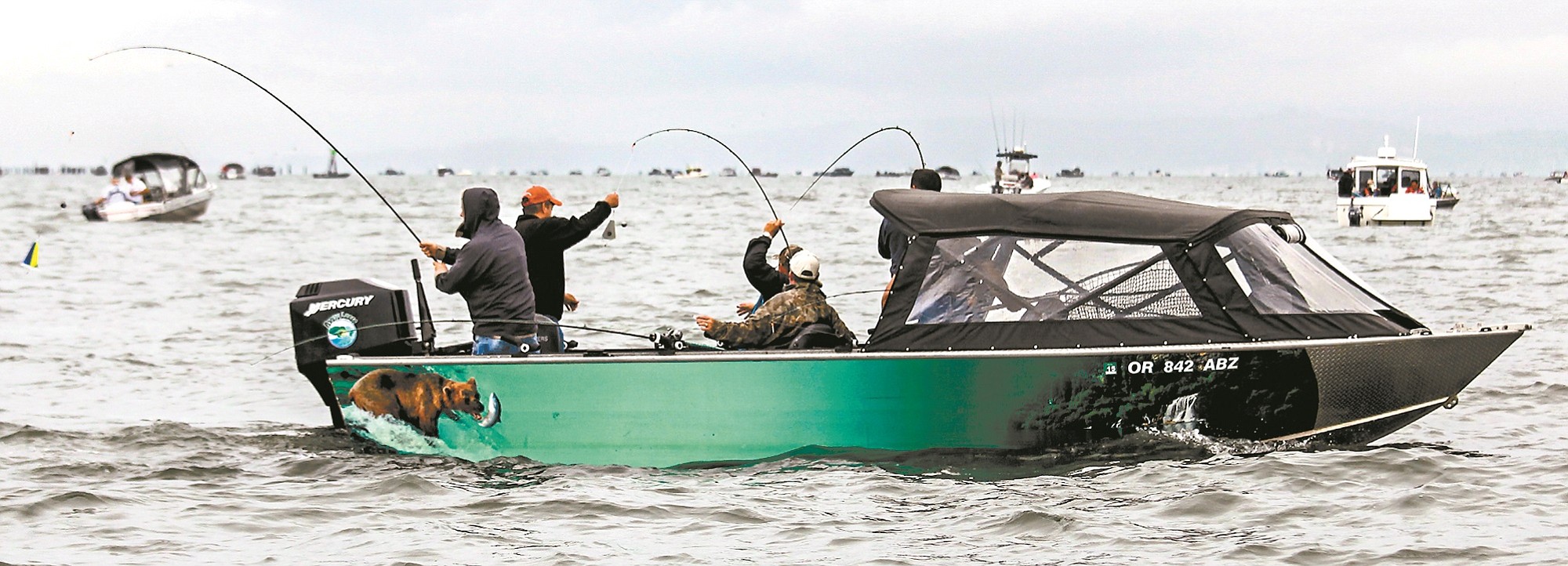Two years ago, Washington and Oregon adopted the most sweeping reforms of lower Columbia River sport and commercial fishing policies since the 1930s.
Jumpstarted by Oregon Gov. John Kitzhaber, the changes allocate more chinook salmon to sportsmen in the main Columbia and restrict gillnetting to off-channel sites like Youngs Bay near Astoria, Deep River in Washington and possibly Cathlamet Channel.
Those off-channel spots are to be stocked with many more chinook and coho and additional off-channel locations are being researched.
Commercial fishing that remains in the main Columbia is to be done with live-capture methods — such as purse seines and beach seines — designed to harvest hatchery stocks and release wild fish.
The reforms are complicated and uncertain. They depend on a variety of factors — including financing — not totally controlled by the state fishery agencies. They involve some biological assumptions that still need real-world verification.
Sportsmen generally consider the reforms a victory. Columbia River gillnetters view them as a defeat. The two sides feuded for decades between the two state legislatures, fish and wildlife commissions and the Columbia River Compact.
The reforms were enacted for a 10-year period of 2013 through 2023. State fishery managers are heading into the third year of a four-year 2013-2016 “transition period,” which contains a series of progressive steps to implement the policy.
Both the Washington and Oregon fish and wildlife commissions got an annual briefing in early January regarding the implementation of the reforms.
Here is a look at some of what they were told:
OFF-CHANNEL ENHANCEMENTS: There report here is a mixed bag. Overall, the goal of releasing more young chinook and coho in the off-channel is on track. Oregon met its goal of releasing an additional 500,000 spring chinook in 2014.
Washington initiated a new release of 200,000 spring chinook in Cathlamet Channel in 2014 and has fish in hand for a 2015 release. However, a funding questions remain about the 2016 release.
Test fishing in Cathlamet Channel from mid-February through mid-May in 2014 caught about 55 percent upper Columbia salmon, not a good number. However, the west end of Cathlamet Channel had a much lower percentage of upper Columbia spring chinook. Officials are hopeful it will evolve into another off-channel gillnetting site.
Clifton Channel and Westport Slough in Oregon, plus Coal Creek Slough in Washington, have been selected for additional evaluation as future off-channel sites.
ALTERNATIVE FISHING: Pilot commercial beach and purse seine fisheries began in 2014 in the lower Columbia.
Four purse seine and six beach seine fishermen were drawn randomly from a pool of 45 applicants and were allowed to seine between Aug. 19 and Sept. 30 to address research questions about this type of commercial fishing.
They had individual quotas limiting how many adult chinook and coho could be sold, and how many steelhead could be handled and released. Only fin-clipped salmon could be kept.
The permit holders had mixed results, mentioning the high costs of gearing up and the low mark rate on fall chinook. Analysis still is under way to determine the percentages of released wild fish that die from handling in the seines.
The states also completed the second year of experimenting with live-capture tangle nets for hatchery coho in October between the coast and mouth of the Lewis River.
ALLOCATION: The plan increased the sport share of spring chinook to 70 percent of allowed upper Columbia-Snake impacts, which are a metric for the allowance of Endangered Species Act-listed fish that can be killed incidentally in pursuit of non-listed stocks. These impacts on wild salmon allow fishermen to harvest hatchery spring chinook.
The final spring chinook catch sharing between sport and commercial in 2014 was 83 percent sport, with the sharing of upper Columbia-Snake impacts at 63 percent sport-37 percent commercial.
Summer chinook are to be shared 60 percent sport-40 percent commercial downstream of Priest Rapids Dam. The final number was 51 percent for sportsmen in 2014. The sport share of summer chinook jumps to 70 percent in 2015 and 2016.
In 2017 and beyond, Washington’s policy calls for the sharing ratio to be determined. Some Washington commission members have said they want all the summer chinook to be allocated to sportsmen, except what the commercials need as incidental to catch late spring chinook and early fall chinook in their off-channel areas.
Discussions with Oregon are pending.
Sportsmen get as much as 70 percent of the ESA impacts for lower Columbia River tule fall chinook, the weak stock that limits fisheries in August and September. In-season management is difficult. In 2014, sportsmen got 80 percent of the lower Columbia tule impacts.
Fall chinook and coho returns in 2014 were exceptional. At Buoy 10, sportsmen kept 26,800 chinook and 57,600 coho, both excellent numbers. Between Tongue Point and Bonneville Dam, sportsmen kept 26,300 chinook and a record-high 5,800 coho, which do not bite well upstream of the estuary.
In 2017, the sport share of the ESA impacts for both lower Columbia tules and wild Snake River fall chinook increases to as much as 80 percent.
BARBLESS HOOKS: Sportsmen in the lower Columbia and tributaries were required to use barbless hooks starting in 2013. Barbless hooks are believed to reduce the mortality of released wild salmon and steelhead.




